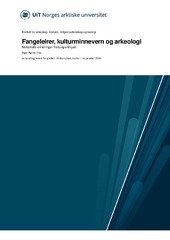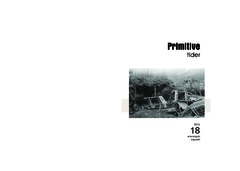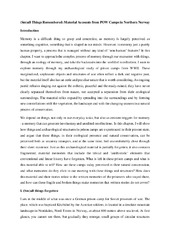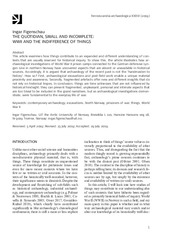| dc.contributor.advisor | Olsen, Bjørnar | |
| dc.contributor.author | Figenschau, Ingar | |
| dc.date.accessioned | 2020-02-07T13:50:29Z | |
| dc.date.available | 2020-02-07T13:50:29Z | |
| dc.date.issued | 2020-02-21 | |
| dc.description.abstract | Denne avhandlingen tar utgangspunkt i Lyngenstillingen, en tysk forsvarslinje som ble bygget i løpet av høsten 1944 og vinteren 1945 i Storfjord, Troms fylke. Undersøkelsesområdet ligger i Norddalen, en forlengelse av Kitdalen som ligger innerst ved Lyngenfjorden. Her ligger restene etter tyske fangeleirer. Hovedfokuset for avhandlingen har vært å se nærmere på hvordan en arkeologisk vinkling på fangeleirer kan gi andre og ukjente beretninger om krigen. Det er derfor benyttet ordinære arkeologiske metoder, herunder befaring, registrering og utgraving av fangeleirene Spittal og Kitzbühel. Avhandlingen fokuserer på krigsminnenes endrede status i etterkrigstiden, hvordan en arkeologisk tilnærming kan belyse andre og tidligere glemte beretninger i leirene, samt hvordan krigsminnenes ofte negative og forvrengte fremtoning påvirker oss og våre omgivelser.
Undersøkelsene viser hvordan en arkeologisk tilnærming til en tidsperiode som i dagens disiplinære landskap oppleves som for ung og nær, og som for historisk dokumentert og studert, likevel er genuint arkeologisk. På bakgrunn av dette stilles det blant annet spørsmål ved kulturminnevernets økende interesse for krigsminner, og i hvilken grad blir krigsminners særegne identitet ivaretatt i møte med forvaltningen? Gjennom feltarbeid har det også vært viktig å undersøke ruinenes og tingenes materielle utsagnskraft og hvilke alternative erindringer de kan belyse og fremkalle. De materielle beretningene har i stor grad vært utelatt fra de historiske fortellingene, noe som har medført at krigens mindre attraktive og mer banale og trivielle sider har kommet i skyggen. Men nettopp her ligger arkeologiens unike potensiale.
De arkeologiske funnene som har framkommet gjennom mine undersøkelser gir ingen ferdige, komplette og sammenhengende beretninger fra Spittal eller Kitzbühel. De gir derimot små innblikk i hendelser og hverdagslige situasjoner som ofte er frigjort fra historiens lineære forløp, overliggende korrekthet, og fastsatte preferanserammer. Gjennom tingenes varighet fremkommer en erindring som delvis er skjult og tidvis utilgjengelig, og som følgelig ikke alltid lar seg avdekke ved første forsøk. | en_US |
| dc.description.abstract | This thesis is based on the Lyngen Line, a German line of defense that was built during the autumn of 1944 and the winter of 1945 in Storfjord, Troms county, northern Norway. The study area is located in Norddalen, an extension of Kitdalen, which lies as a continuation of the eastern end of the Lyngen Fjord. Here are the remains of four German prison camps named after Austrian sites; Spittal, Mallnitz, Gastein and Kitzbühel. The main focus of the dissertation is to look more closely at how an archaeological approach to prison camps can give different and unknown accounts of the war. Ordinary archaeological methods, including survey, registration, and excavation, were therefore used, and the prison camps Spittal and Kitzbühel selected for further investigations. Being part of the Object Matters research project, it has been natural to base my study on such a material and object oriented approach, an approach which already has yielded new perspectives on contemporary ruin landscapes. Instead of expanding the already rich theoretical aspect of contemporary archeology, it has been important to anchor this work in a specific archaeological context, in this case prison camps from World War II. The dissertation focuses on the changed status of the war heritage in the post-war period (articles A and D), how an archaeological approach can illuminate other and previously forgotten stories in the camps (articles B and C), and how the war heritage’s often negative and distorted appearance affects us and our surroundings (articles A - D). | en_US |
| dc.description.doctoraltype | ph.d. | en_US |
| dc.description.popularabstract | This thesis is based on the Lyngen Line, a German line of defense that was built during the autumn of 1944 and the winter of 1945 in Storfjord, Troms county, northern Norway. The study area is located in Norddalen, an extension of Kitdalen, which lies as a continuation of the eastern end of the Lyngen Fjord. Here are the remains of four German prison camps named after Austrian sites; Spittal, Mallnitz, Gastein and Kitzbühel. The main focus of the dissertation is to look more closely at how an archaeological approach to prison camps can give different and unknown accounts of the war. Ordinary archaeological methods, including survey, registration, and excavation, were therefore used, and the prison camps Spittal and Kitzbühel selected for further investigations.
Instead of expanding the already rich theoretical aspect of contemporary archeology, it has been important to anchor this work in a specific archaeological context, in this case prison camps from World War II. The dissertation focuses on the changed status of the war heritage in the post-war period, how an archaeological approach can illuminate other and previously forgotten stories in the camps, and how the war heritage’s often negative and distorted appearance affects us and our surroundings. The archaeological investigations of the prison camps Spittal and Kitzbühel show how an archaeological approach to a period of time which in our current disciplinary landscape consistently is experienced as too young and near, and thus too historically documented and studied, still is genuinely archaeological. Against this background, questions are also raised about the growing heritage interest in the ruins of war, and what happens to them when they are translated into the current dominant discourses of heritage. To what extent will their distinctive identities survive this encounter? In the face of the ongoing recollections of war, it has also been important to explore the material enunciation of things left behind and what alternative memories they can illuminate and evoke. The material accounts have largely been omitted from the historical accounts, and thereby contributed to a silencing of the less attractive and more trivial and banal aspects of war. Precisely here, however, lies the unique potential of archeology.
The ruins of war and their ongoing decay are difficult to fit into a cultural heritage policy based on value and identity creation, and retention of bounded pasts. Archaeological material rarely fits into existing historical narratives but often objects to a logical and linear timeline where the past constantly is left behind. In many ways it resembles human memory – being fragmented and at times incoherent. Thus, the archaeological finds retrieved from my investigations do not give any complete and coherent accounts from Spittal or Kitzbühel. They rather provide small glimpses into incidents and everyday situations that are released from any pursuit of linear progress, overarching correctness, or set frameworks of preferences. Due to things’ duration they carry a potential of remembering that is partially hidden and sometimes inaccessible, and which thus is not always detectable at the first attempt. | en_US |
| dc.identifier.uri | https://hdl.handle.net/10037/17356 | |
| dc.language.iso | nob | en_US |
| dc.language.iso | eng | en_US |
| dc.publisher | UiT Norges arktiske universitet | en_US |
| dc.publisher | UiT The Arctic University of Norway | en_US |
| dc.relation.haspart | <p>Paper A: Figenschau, I. (2016). Krigsminner som kulturminner. Redning eller klam omfavnelse? <i>Primitive Tider, 18</i>, 199-215. Also available in Munin at <a href=https://hdl.handle.net/10037/17297>https://hdl.handle.net/10037/17297</a>.
<p>Paper B: Figenschau, I. (Sm)all Things Remembered: Material Accounts from POW Camps in Northern Norway. (Accepted manuscript). To appear in T.R. Bangstad & Þ. Pétursdóttir (Eds.), <i>Heritage Ecologies</i>. London & New York: Routledge.
<p>Paper C: Figenschau, I. (2019). The Quotidian, Small and Incomplete: WWII and the Indifference of Things. <i>Fennoscandia Archaeologica, XXXVI</i>. Also available in Munin at <a href=https://hdl.handle.net/10037/17353>https://hdl.handle.net/10037/17353</a>.
<p>Paper D: Figenschau, I. (2019). The Heritage of War and the Discourse of Sustainability. <i>Norwegian Archaeological Review, 52</i>(2), 89-109. Also available at <a href= https://doi.org/10.1080/00293652.2019.1691253> https://doi.org/10.1080/00293652.2019.1691253</a>. Accepted manuscript version available in Munin at <a href=https://hdl.handle.net/10037/17394>https://hdl.handle.net/10037/17394</a>. | en_US |
| dc.rights.accessRights | openAccess | en_US |
| dc.rights.holder | Copyright 2020 The Author(s) | |
| dc.rights.uri | https://creativecommons.org/licenses/by-nc-sa/4.0 | en_US |
| dc.rights | Attribution-NonCommercial-ShareAlike 4.0 International (CC BY-NC-SA 4.0) | en_US |
| dc.subject | Arkeologi | en_US |
| dc.subject | Andre verdenskrig | en_US |
| dc.subject | Lyngenstillingen | en_US |
| dc.subject | Fangeleir | en_US |
| dc.subject | Krigsminner | en_US |
| dc.subject | Kulturminnevern | en_US |
| dc.subject | Gjenstandsmateriale | en_US |
| dc.subject | Arkeologisk feltarbeid | en_US |
| dc.title | Fangeleirer, kulturminnevern og arkeologi. Materielle erindringer fra Lyngenlinjen. | en_US |
| dc.type | Doctoral thesis | en_US |
| dc.type | Doktorgradsavhandling | en_US |


 English
English norsk
norsk




